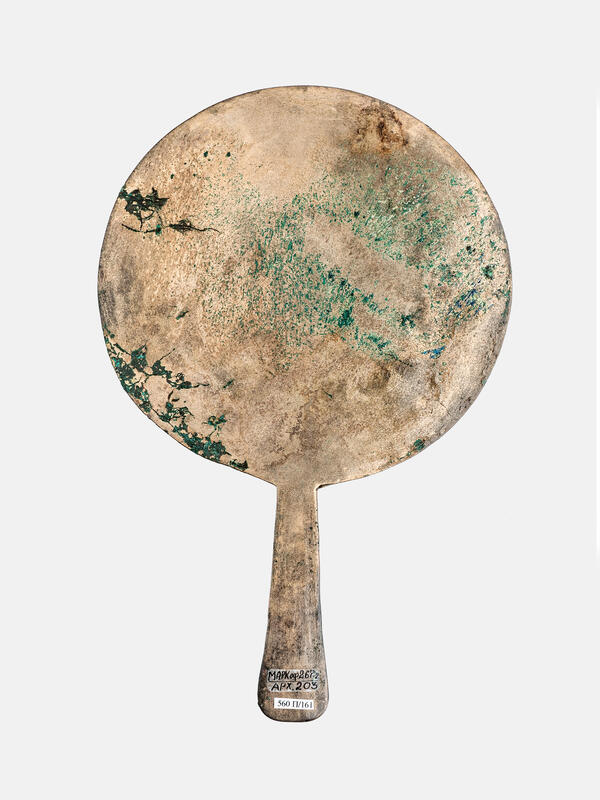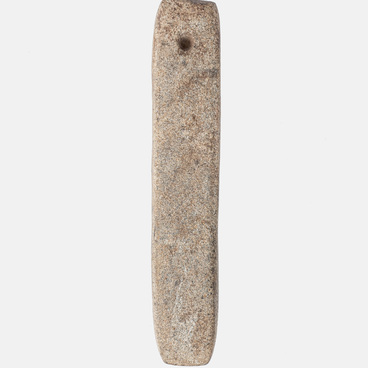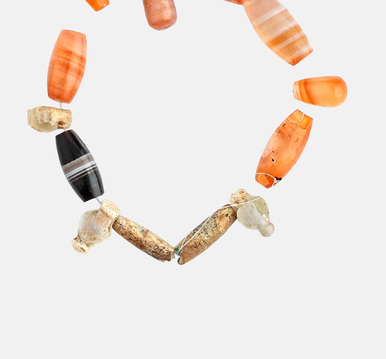The museum exhibition includes a bronze mirror from mound 3 of the Pobeda burial ground (Kizilsky district, Chelyabinsk region). The burial mound was studied in 1999–2000 by the archaeological expedition of the Arkaim Museum-Reserve and Chelyabinsk State University led by Alexander Tairov and Ilya Lyubchansky.
The Pobeda burial ground is located six kilometers northeast of the village of Zingeysky on a flattened hilltop and consists of three mounds with earthy, well turfed fill. Mound 3 was 20 meters in diameter and 0.8 meters high. Five grave pits were found under the mound. Among the finds were ceramic vessels, iron knives, a quiver with arrows (one bone arrowhead and twenty-three bronze ones), and the remains of an incomplete ram carcass. Grave pit 3 is embedded in the southwestern flank of the mound. The entrance to the burial chamber was closed with poles and blocks. A skeleton of a woman was excavated at the bottom of the burial chamber (1.1 meters deep). The buried woman was laid on her back, with her arms stretched along her body. There was a bronze torc around her neck and a silver ring on the ring finger of her right hand. At her right shoulder was a leather bag, inside which there was a bronze mirror with a long side handle, a bronze wheel amulet and an iron knife. At the right knee was a ceramic vessel, at the feet was a piece of chalk, two bone spoons, a shell, a ceramic spindle whorl and a round pebble.
The bronze mirror is very well preserved. On the reverse side of the mirror in the center there is an umbo (diameter — 0.9 centimeters, height — 0.4 centimeters), around which there is a roller (diameter — 3.3 centimeters, width — 0.6 centimeters). Further to the periphery are concentric circles drawn twice in pairs, and another single circle at the edge. The handle smoothly expands to the rounded end. It is slightly thickened at the base. The disk at the junction with the handle on the reverse side has an arched pattern, the ends of which pass into the lateral edges of the handle.


